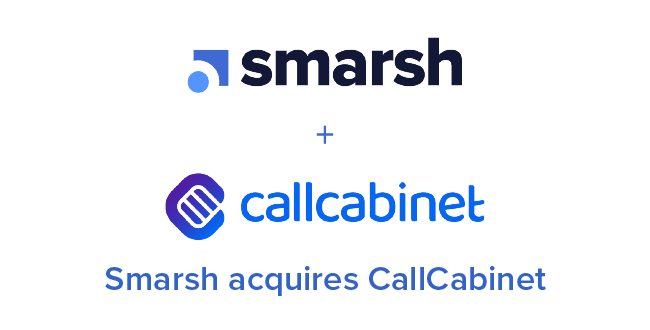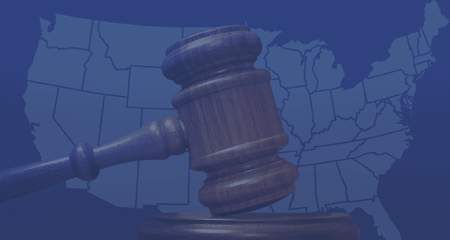It’s Time to Integrate Voice with Communications Compliance
For far too long, many regulated firms have captured and stored voice communications through a single-purpose, siloed product that was designed when telephony teams were consumed by codecs and wrestling with voice and audio data extraction from legacy PBX systems. Operating these systems has required highly specialized expertise, which only rarely intersects with other areas communications domains such as email and instant messaging. As a result, communications and voice have remained fragmented - in spite of the promise of today’s “unified” communications.
However, the explosion in the use of VoIP-enabled collaboration tools is making this untenable for compliance and legal functions. The time for unified communications compliance can no longer wait. But what do financial institutions need to look for in their compliance solution providers to make that leap?
Recording of voice communications for regulatory compliance, customer-dispute resolution and risk mitigation has been an established practice in financial institutions across the globe for several decades.
Yet, voice and electronic communications compliance processes—from archive to supervision and e-discovery—remain siloed, operational streams in all but the most progressive firms.
The fluidity of channel hopping within and across voice-enabled collaboration applications, like Microsoft Teams, means that analyzing conversations for supervision and investigations has exponentially increased in difficulty.
This situation has long been left to the compliance and investigating legal teams, leaving them to suffer. No more. We’ve reached a tipping point.
Challenges to Voice Compliance
Bringing voice and e-communications into a single unified compliance operation has been hampered by three main challenges:
1. Voice has been dealt with separately for a reason. Despite the convergence in technology, “voice” represents a technically diverse spectrum of channels that must be captured;
2. Most incumbent enterprise archives were built for email and not for voice;
3. Firms have found it hard to find cost-effective and reliable methods to bring voice calls into their supervision workflows
Overcoming these challenges is possible, and necessary. What can you do to make the leap to unified communications compliance? Adopt the right approach—and the right solution.
Can You Capture It All?
It is easy to think of voice as a single channel. It’s not.
Enterprises operate an ever-growing spectrum of methods—multiple telephony PBX and trader turret systems, corporate and personal mobiles (including bring-your-own-device, or BYOD) and VoIP-enabled collaboration applications like Microsoft Teams.
With true vendor convergence only just starting to happen, buyers need to critically assess their solution providers in three areas: capture, archive, and transcription—the enablers of efficient supervision and discovery.
Provider considerations:
1) Breadth of capability, including deep capture and archive relationships with carrier providers for text messages and BYOD solutions. Does your vendor offer multi-channel voice capture?
2) The ability to allow you to retain existing voice-recording systems. Dominant vendors can breed innovation. Innovation has happened to liberate data from existing recording systems, previously considered ‘walled gardens’ without having to embark on complex, disruptive and costly replacement projects. Can your vendor access and archive the data while leaving your business-critical trader-voice recording systems in one piece?
3) When looking at VoIP don’t think of it in isolation. VoIP is the network protocol that enables collaboration across a number of modern workplace applications, operating over DSL/cable modem, voice over Wi-Fi/3G (VoWiFi/3G), voice over LTE (VoLTE), and Rich Communication Suite (RCS). However, VoIP isn’t alone in its class. For example, Web Real-Time Communication (WebRTC), is an open framework solely focused on browser-based communications. While you can have VoIP without WebRTC you cannot have WebRTC without VoIP. Does your current vendor support multiple operating systems and channels of capture for voice communication?
The future of voice will see it as part of a seamless, multi-channel experience. If your vendor cannot effectively support your chosen collaboration applications in all their glory—chat, group chat, file share, video, etc.—then they should be ruled out.
Can Your Archive Handle It?
Built for a simpler, less data-intensive world, many firms’ archives are not cut out to accommodate voice media, the volume uptick or the unique workflow-rendering requirements.
Questions to ask when evaluating:
1) Can it “handle” voice? Because the need to capture and store e-communications is not new, there are systems that have been in existence for decades. But that does not mean the system is equipped to properly store voice data. (For example, WORM (write once, read many) solutions.)
2) Does it have the correct capacity? Voice data is dense. With files that are both larger with far greater format diversity than other modes of communication voice data can put archives under strain. In native form a voice file plus basic message metadata can easily exceed 1MB per minute. For one employee making just 30 minutes of calls per day, that amounts to 150MB per week. For a firm with 500 regulated employees that’s 3,900,000MB (or 3,808GB or 3.7 TB) per year! Can your archive handle it?
3) What are the capabilities for playback? Although this point seems straightforward, HOW voice playback is rendered and integrated into search and supervision processes and workflows is critical to efficient, responsive operations:
a) Can you search and find the conversation in context? It’s unlikely the only method of communication used was voice—what about SMS or email?
b) The ability to search is one thing, but does playback support the ability to add a voice file to a queue and playback in order is another?
c) Can it perform the same processes on a recording as you would on any other type of communication, i.e. tagging?
d) Will it allow effortless use of the same search and discovery tools used for text-based communications?
You Need More Than a “Written” Record
The history of software is littered with over-hyped technologies, and speech analysis is up there with the best. First appearing on the scene twenty years ago with Audrey, the automatic digit recognizer, it’s use was confined to large contact centers to analyze simple, repeated customer conversations. Put it in, say, a complex financial-transaction scenario and results plummeted.
Then one thing changed: cloud computing, and with it, machine learning. Low-cost compute available on-demand, and with feedback loops. With accuracy way up and cost way down, transcription—one of a couple of flavors of speech analytics—is now viable for most firms.
It is still not a perfect science. Dialects, pronunciation, multi-lingual conversations, and media quality still have a huge bearing on transcription quality. In a country like Switzerland, with four languages and multiple dialects within its 26 cantons, this remains a challenge.
Considerations:
- Ensure: Providers can offer you the flexibility to change select transcription technologies to suit you. Transcription capability is still changing rapidly; now is not the time to be locked into a single (read unadaptable) solution.
- Evaluate: Vendors that can provide computing and development scale — AWS, Microsoft, Google, IBM — are likely to win out; but it is also a fertile ground for agile, niche players that can customize speech-to-text workplace for customer-specific use cases.
- Review: Transcription in and of itself is not a silver bullet. Merely having it is not enough. It must be able to be searched, exported, and attached in order to be applied appropriately and treated judiciously.
Conclusion
Voice is yet another channel in a rapidly growing panoply of communication methods which presents unique challenges. But those challenges can be solved.
In today’s modern workplace there is significant business pressure to embrace the organizational efficiency that becomes possible through adoption of collaboration tools powering communication across multiple channels simultaneously. From a compliance perspective, voice is undeniably a core component to being fully compliant, and as such can no longer be treated in isolation to other non-voice communication methods. Bringing voice into compliance requires the ability to treat voice as any other form of data. With innovative methods of communication comes as equally innovative tools for capture.
As effortless as the user switches between chat, voice, and video communication, so too should be the capture and storage. Meaning a Compliance Archive must compliment dynamic present-day workflows, seamlessly archiving and presenting omni-channel communications in a single pane of glass.
Share this post!
Smarsh Blog
Our internal subject matter experts and our network of external industry experts are featured with insights into the technology and industry trends that affect your electronic communications compliance initiatives. Sign up to benefit from their deep understanding, tips and best practices regarding how your company can manage compliance risk while unlocking the business value of your communications data.




Subscribe to the Smarsh Blog Digest
Subscribe to receive a monthly digest of articles exploring regulatory updates, news, trends and best practices in electronic communications capture and archiving.
Smarsh handles information you submit to Smarsh in accordance with its Privacy Policy. By clicking "submit", you consent to Smarsh processing your information and storing it in accordance with the Privacy Policy and agree to receive communications from Smarsh and its third-party partners regarding products and services that may be of interest to you. You may withdraw your consent at any time by emailing privacy@smarsh.com.
FOLLOW US